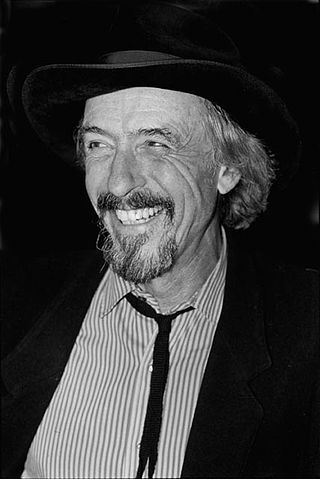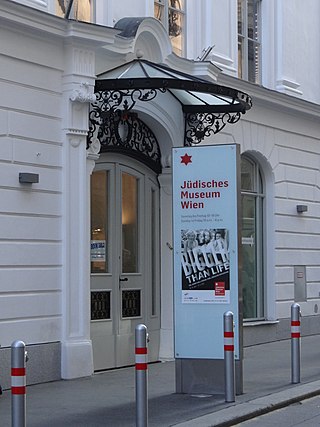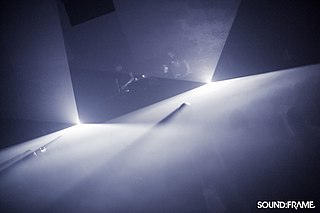
Danielle Spera (born 10 August 1957, in Vienna) is an Austrian journalist, writer, and a former director of the Jewish Museum Vienna.

Danielle Spera (born 10 August 1957, in Vienna) is an Austrian journalist, writer, and a former director of the Jewish Museum Vienna.
Spera studied English and French for two semesters at the University of Vienna, before changing to journalism and political science. [1] In 1983 she completed her doctorate on the election campaigns of the Social Democratic Party in the interwar period, [2] and from 1990 to 2002 she was a lecturer at the Department of Communication at the University of Vienna. [3]
Spera started working at the Austrian broadcasting corporation ORF in 1978 while still at university. After two years on the foreign desk of the evening news show, Zeit im Bild 2, she changed to the Wochenschau program, later returning to the foreign desk. After assignments in Central America, Greece and Cyprus, she was appointed ORF correspondent in the US in April 1987, [4] shortly before the announcement that Austrian president Kurt Waldheim was put on the Watch List of persons banned from entering the United States over suspicions about his wartime record. In 1988 Spera returned to the ORF centre in Vienna, and took up the moderation of the main news program of the ORF, the Zeit im Bild 1. She held that position for over 4,000 shows until June 2010, [5] becoming one of the most recognized faces in the Austrian media scene. Her moderation partners included Horst Friedrich Mayer , Josef Broukal , Martin Traxl and Tarek Leitner . She also moderated the weekend magazine 'Brennpunkt.
Spera applied successfully for the post of director of the Jewish Museum of Vienna in 2009, and formally took over the job in July 2010. [6] In interviews around the time of her appointment, she said she would put her name and celebrity at the service of the museum, which was at the time rather unknown to the general public. [7] She also said she aimed to "open up" the museum to the public, to create a space where fears and prejudices were dispelled and non-Jews could experience both the traumatic past and the vibrant present of the Austrian Jewish community. Specific goals also included reaching out to young people with targeted projects for schools, and to tourists. [8]
"Much has normalised. But there are still many people who have difficulty with it, uttering the word 'Jew', they say 'our Jewish fellow citizens'. I want to open the museum up so people get to know Judaism better," she said in an interview. [9]
To accommodate the new direction of the museum, Spera made the immediate renovation of the Dorotheergasse premises a priority, launching an intensive fundraising effort both from official sources in Austria and from the Jewish diaspora especially in the United States. The renovation, between January and October 2011 aimed at a complete technical overhaul of the museum infrastructure as well as to changes in layout and visitor facilities.
During the renovation project of 2011, a set of glass holograms showing 3D depictions of old Viennese life was broken on its removal from the museum. A museum employee took pictures and sent them to curator blogs [10] and the local media, [11] creating a furore about what critics said was the destruction of cultural artifacts. Spera herself was personally attacked as she was seen as the driving force behind the renovation project. The museum responded with a report from a court-certified expert who testified the holograms could not have been unmounted without damage as they had been glued together almost 15 years prior. [12] The museum added that a second set of the same holograms, that had not been on display, was still intact and would be placed in storage for future use.
Spera was initially a controversial choice for director due to her lack of museum experience, but has since been widely credited with greatly increasing the public profile of the museum through her choice of exhibition themes with wide appeal, pushing for cooperations with other cultural institutions, and personal engagement in publicizing the museum's work through video podcasts and media work. Since its re-opening after the renovation, the museum has attracted record numbers of visitors, [13] both to its regular exhibitions and to its evening program of events featuring visiting artists, which Spera moderates. [14] Specifically, the Judenplatz location posted doubling of its visitor numbers year on year (28.000 visitors in 2011 vs 14.000 in 2010) while attendance to its evening events program tripled. [15] The museum is currently in the Top 30 of Viennese attractions. [16]
In 2000, Spera co-founded the Jewish cultural magazine Nu, [17] to which she is still a frequent contributor. She often appears as a moderator in cultural events, for example leading meetings with prominent artists in the City Theatre Walfischgasse, appearing at the Literatur im Nebel with Salman Rushdie in October 2006, or arranging readings of children's books by Mira Lobe. She has been a member of the Advisory Board of the Nitsch Foundation since 2011, and in 2013 was appointed to the university council of the Medical University of Innsbruck and to the program committee of television station ARTE.
In addition to the general management of the museum, Spera also acts as a curator, most recently for the exhibitions TATIANA LECOMTE (23.05. -27.10.2013), Jewish genius: Warhol's Jews (14.03-28.10.2012) and Waiting room of hope: The Rothschild Hospital in November 1947 - Photos of Henry Ries (19.10.2012-17.02.2013)
In 1992 and 2007 she received the Austrian television award Romy for the most popular moderator.
In 1999 Spera published a biography of Hermann Nitsch – Life and Work. The book was released in an updated edition in 2005. Other recent publications [18] include:
Spera was born to a Jewish father and a Catholic mother and visited a Catholic private school. [19] She converted to Judaism in her mid-20s [20] and is married to psychoanalyst Martin Engelberg. The couple have three children: Samuel, Rachel and Deborah. [21] She describes herself as leading a traditional Jewish life at home, observing Schabbat and all religious holidays. [22]

Vienna is the capital, largest city, and one of nine States of Austria. Vienna is Austria's most populous city and its primate city, with about two million inhabitants, and its cultural, economic, and political center. It is the sixth-largest city proper by population in the European Union and the largest of all cities on the Danube river.

Arik Brauer was an Austrian painter, printmaker, poet, dancer, singer-songwriter, stage designer, architect, and academic teacher.

Wiener Stadthalle is a multi-purpose indoor arena and convention center located in the 15th district of Vienna, Austria. Austrian architect Roland Rainer designed the original halls which were constructed between 1953 and 1958, and later expanded in 1974, 1994 and 2006. The main hall, a multi-purpose venue, is Austria's largest indoor arena with a seating capacity of approximately 16,152 people.

Oskar Strnad was an Austrian architect, sculptor, designer and set designer for films and theatres. Together with Josef Frank he was instrumental in creating the distinctive character of the Wiener Schule der Architektur. He stood for a modern concept of "living" for all people, planned and built private dwelling-houses, designed furniture, created ceramics and watercolours and designed sets and props for stage plays and films.

Dora Philippine Kallmus, also known as Madame D'Ora or Madame d'Ora, was an Austrian fashion and portrait photographer.

The Jüdisches Museum Wien, trading as Jüdisches Museum der Stadt Wien GmbH or the Jewish Museum Vienna, is a museum of Jewish history, life and religion in Austria. The museum is present on two locations, in the Palais Eskeles in the Dorotheergasse and in the Judenplatz, and has distinguished itself by a very active programme of exhibitions and outreach events highlighting the past and present of Jewish culture in Austria. The current director is Barbara Staudinger and the chief curator is Astrid Peterle.

Martina Schettina is an Austrian artist. The main part of her work is Mathematical art.
The history of the Jews in Vienna, Austria, goes back over eight hundred years. There is evidence of a Jewish presence in Vienna from the 12th century onwards.

The MAK – Museum of Applied Arts is an arts and crafts museum located at Stubenring 5 in Vienna's 1st district Innere Stadt. Besides its traditional orientation towards arts and crafts and design, the museum especially focuses on architecture and contemporary art. The museum has been at its current location since 1871. Since 2004 the building is illuminated in the evenings by the permanent outdoor installation "MAKlite" of American artist James Turrell. In 2015 the MAK became the first museum to use bitcoin to acquire art, when it purchased the screensaver "Event listeners" of van den Dorpel. With over 300,000 objects displayed online, the MAK presents the largest online collection within the Austrian Federal Museums. The audio guide to this museum is provided as a web-based app.
Oz Almog is an Israeli and Austrian artist, born on 15 April 1956, in Kfar Saba, Israel.
Gretel Beer was an Austrian-born English author of cooking books and travel reports. She also served as a cookery writer for The Daily Telegraph and Daily Express newspapers.

Dirk Rupnow is a German historian. Since 2009 he has taught as assistant professor, since 2013 as associate professor at the University of Innsbruck, Austria, since 2010 he has been head of the institute for contemporary history there.

Julya Rabinowich (Russian: Юля Борисовна Рабинович; born 1970 in Leningrad, is an Austrian author, playwright, painter and translator. In 1977 her family emigrated to Vienna, a move in which she describes herself as having been “uprooted and re-potted.”

Dr. Emil Mayer was an Austrian photographer, lawyer, inventor, and businessperson.
Marcello Farabegoli is an Italian curator living in Vienna.

sound:frame is an organisation that holds an annual festival in Vienna, Austria, and an artist and event agency in the fields of audiovisual art, music, intermedia and vjing.
Christian Rapp is an Austrian author, cultural scientist and exhibition curator.
Hildegard Joos was an Austrian painter and is known as the "Grande Dame" of geometric abstraction and constructivism in Austria.

Klimt Villa is a building located in the Hietzing district of Vienna built in the early 1920s upon the last Viennese studio of the painter Gustav Klimt.

Susanne Scholl is an Austrian journalist, writer and doyenne of the foreign correspondents of the ORF.